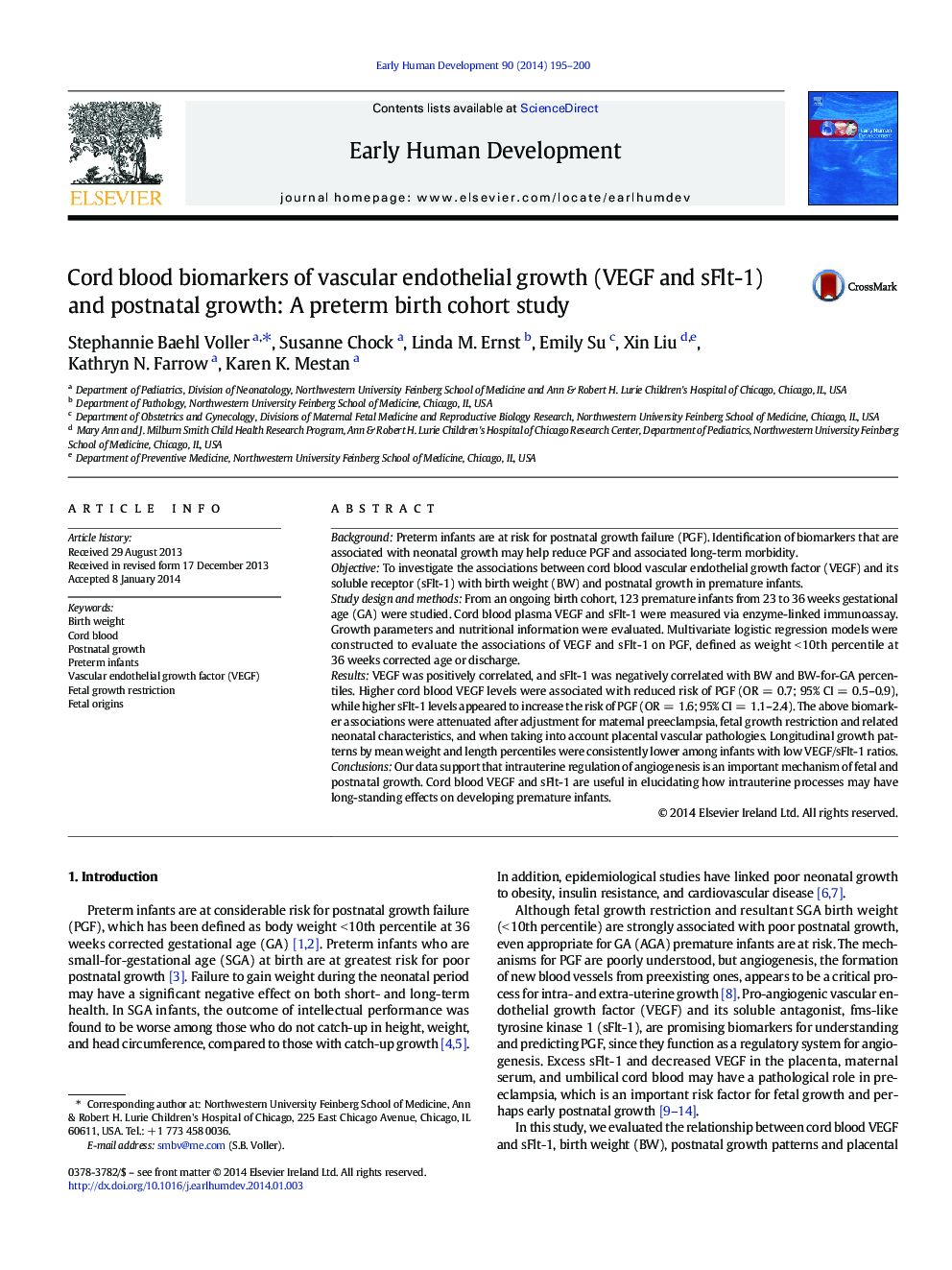| Article ID | Journal | Published Year | Pages | File Type |
|---|---|---|---|---|
| 3916622 | Early Human Development | 2014 | 6 Pages |
BackgroundPreterm infants are at risk for postnatal growth failure (PGF). Identification of biomarkers that are associated with neonatal growth may help reduce PGF and associated long-term morbidity.ObjectiveTo investigate the associations between cord blood vascular endothelial growth factor (VEGF) and its soluble receptor (sFlt-1) with birth weight (BW) and postnatal growth in premature infants.Study design and methodsFrom an ongoing birth cohort, 123 premature infants from 23 to 36 weeks gestational age (GA) were studied. Cord blood plasma VEGF and sFlt-1 were measured via enzyme-linked immunoassay. Growth parameters and nutritional information were evaluated. Multivariate logistic regression models were constructed to evaluate the associations of VEGF and sFlt-1 on PGF, defined as weight < 10th percentile at 36 weeks corrected age or discharge.ResultsVEGF was positively correlated, and sFlt-1 was negatively correlated with BW and BW-for-GA percentiles. Higher cord blood VEGF levels were associated with reduced risk of PGF (OR = 0.7; 95% CI = 0.5–0.9), while higher sFlt-1 levels appeared to increase the risk of PGF (OR = 1.6; 95% CI = 1.1–2.4). The above biomarker associations were attenuated after adjustment for maternal preeclampsia, fetal growth restriction and related neonatal characteristics, and when taking into account placental vascular pathologies. Longitudinal growth patterns by mean weight and length percentiles were consistently lower among infants with low VEGF/sFlt-1 ratios.ConclusionsOur data support that intrauterine regulation of angiogenesis is an important mechanism of fetal and postnatal growth. Cord blood VEGF and sFlt-1 are useful in elucidating how intrauterine processes may have long-standing effects on developing premature infants.
